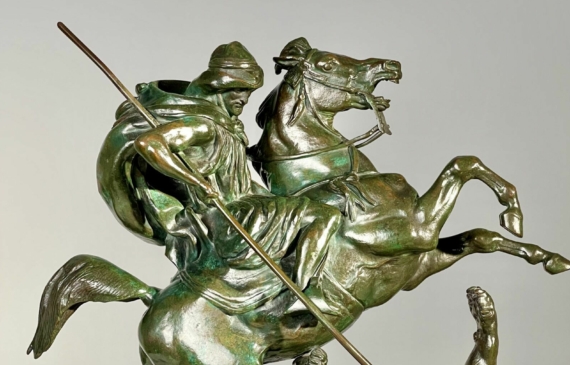
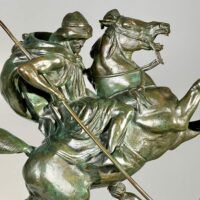
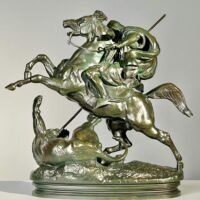

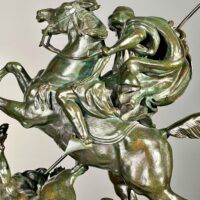
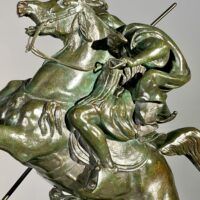
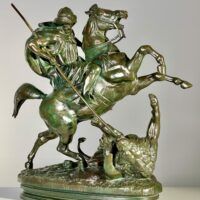
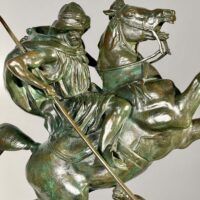
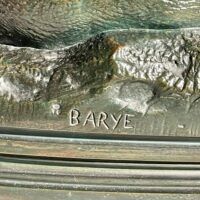
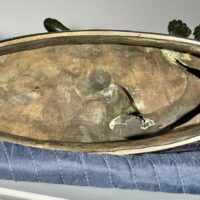
Antoine-Louis Barye (French, 1795-1875)
Arab Horseman Killing a Lion
(Cavalier arabe tuant un lion), c. 1860
Bronze, dark green and brown patina
15 H. x 15 ¼ W. x 6 ¾ inches
Signed on base: BARYE
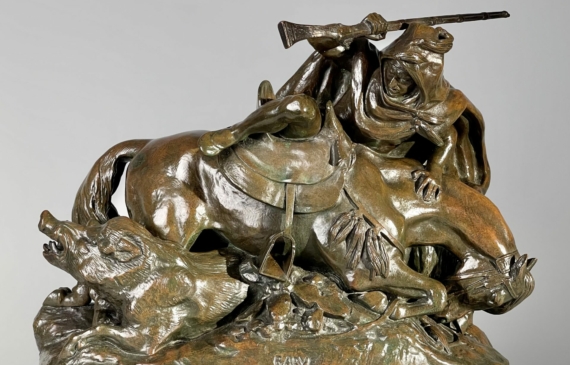
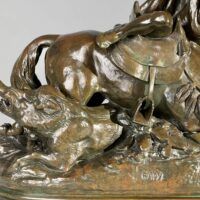
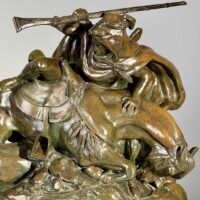
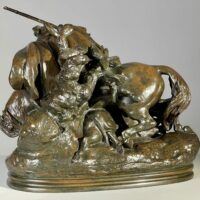
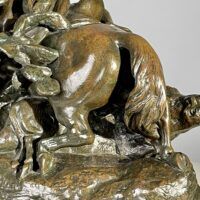
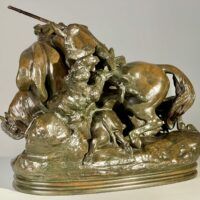
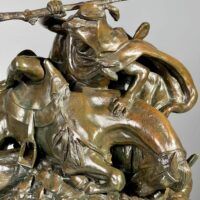
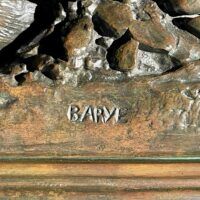
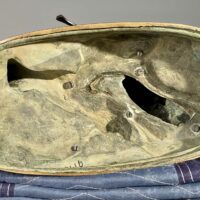
Antoine-Louis Barye (French, 1795-1875)
Arab Horseman – The Boar Hunt
(Cavalier arabe tuant un sanglier), c. 1862
Bronze, dark brown patina
11 ¼ H. x 13 ¼ W. x 9 ½ inches
Signed on base: BARYE
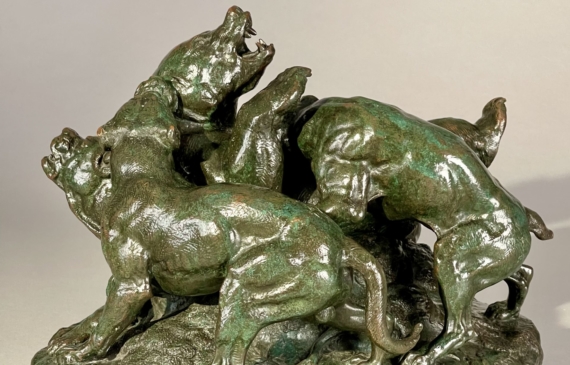
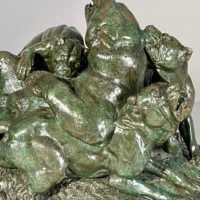
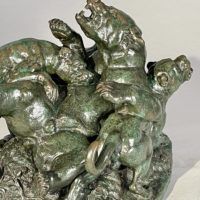
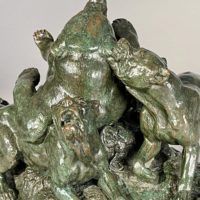
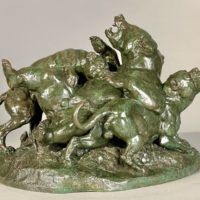
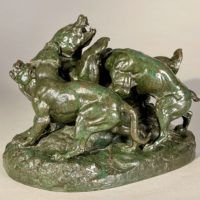
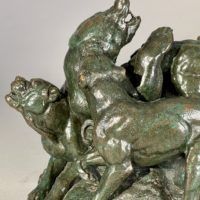
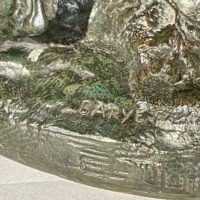
Antoine-Louis Barye (French, 1795-1875)
Bear Downed by Hounds, 1834-38
Bronze, dark green and brown patina
10 ¼ H. x 14 W. x 11 ½ D. inches
Signed on base: BARYE
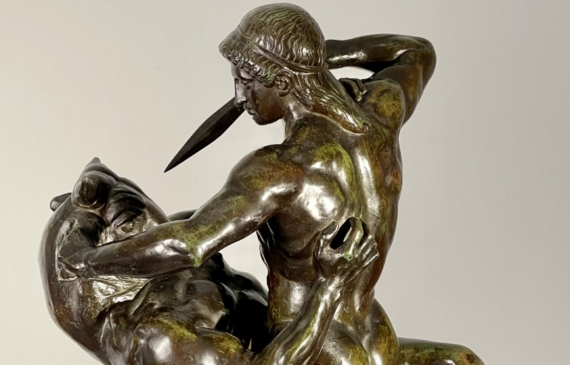
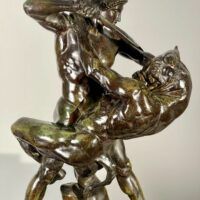
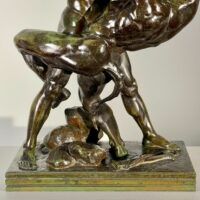
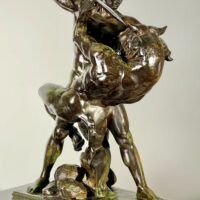
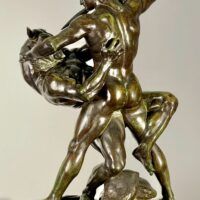
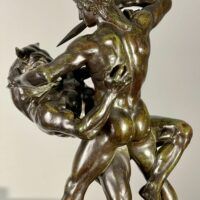

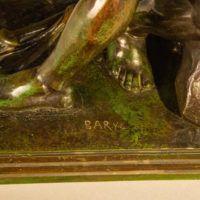
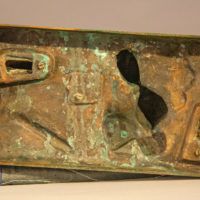
Antoine-Louis Barye (French, 1795-1875)
Theseus Slaying the Minotaur, c. 1857
Bronze, brown and green patina
17 ¾ H. x 11 ¾ W. x 6 ½ D. inches
Signed on base: BARYE
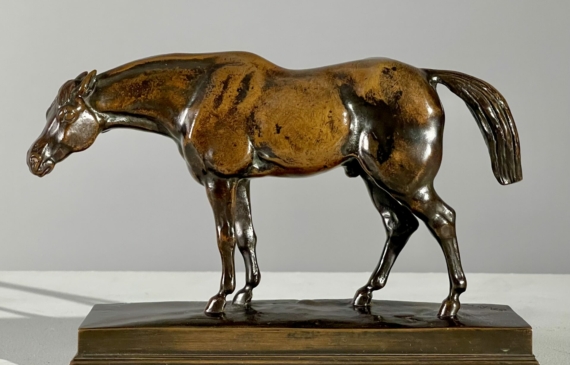
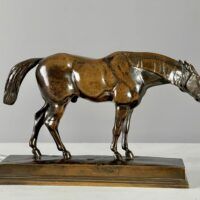
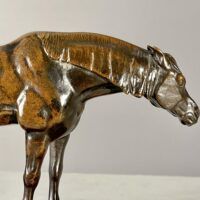

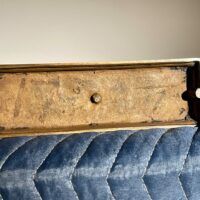
Antoine-Louis Barye (French, 1795-1875)
Half Blood Horse, Head Lowered, 1845
Bronze, brown patina on rectangular base
4 ¾ H. x 7 ¼ W. x 2 ⅛ D. inches
Signed on base: BARYE
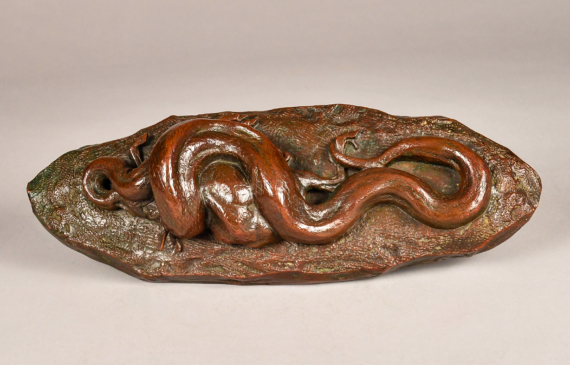
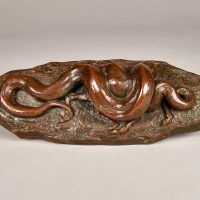
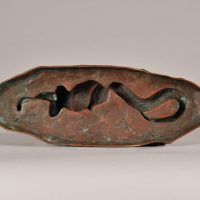
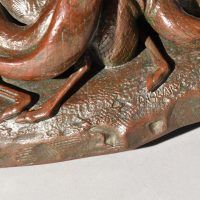
Antoine-Louis Barye (French, 1795-1875)
Python Swallowing a Doe, Second Version, 1857
Bronze, red-brown patina with green
3 ½ H. x 13 ⅝ W. x 4 ⅞ D. inches
Signed on base: BARYE

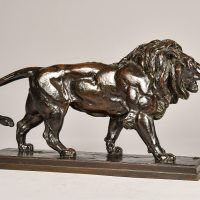
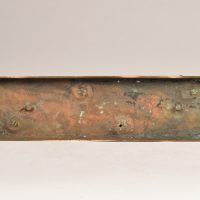
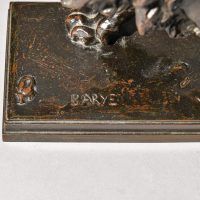
Antoine-Louis Barye (French, 1795-1875)
Walking Lion, 1840
Bronze, brown patina
8 ⅝ H. x 15 ⅜ W. x 4 D. inches
Signed on base: BARYE
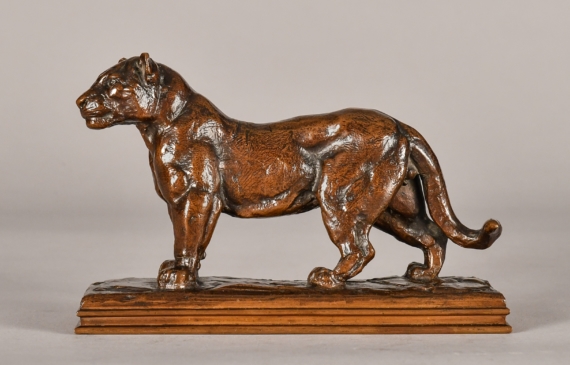
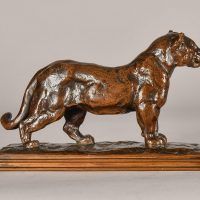
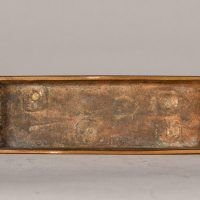
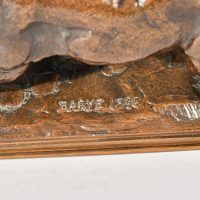
Antoine-Louis Barye (French, 1795-1875)
Standing Jaguar No. 2, 1840
Bronze, brown patina
5 H. x 7 ¾ W. x 2 ⅝ D. inches
Signed and dated: BARYE 1840
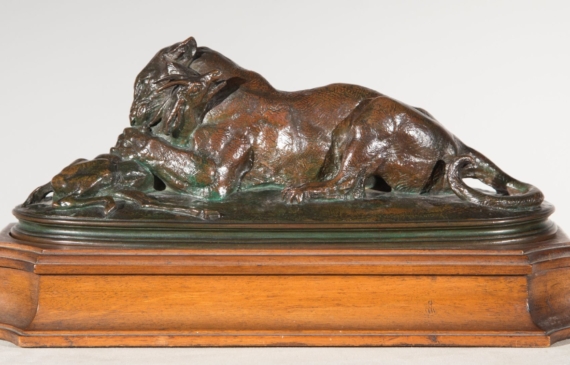
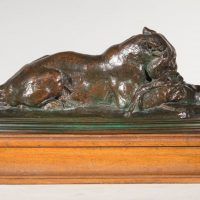
Antoine-Louis Barye (French, 1795-1875)
Tiger Devouring a Gazelle, 1857
4 ¾ H. x 13 W. x 5 D. inches
Signed: Barye
Set on period wood base
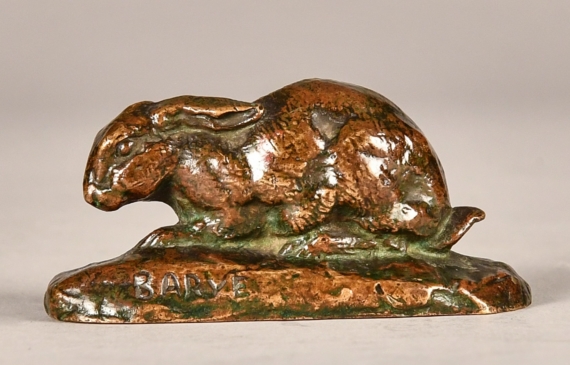
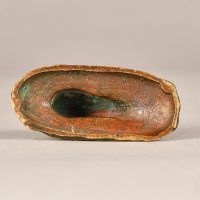
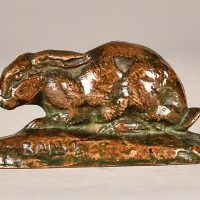
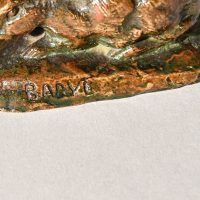
Antoine-Louis Barye (French, 1795-1875)
Rabbit with Ears Back, 1857
Bronze, brown patina
1 ½ H. x 3 W. x 1 ¼ D. inches
Signed on base: Barye
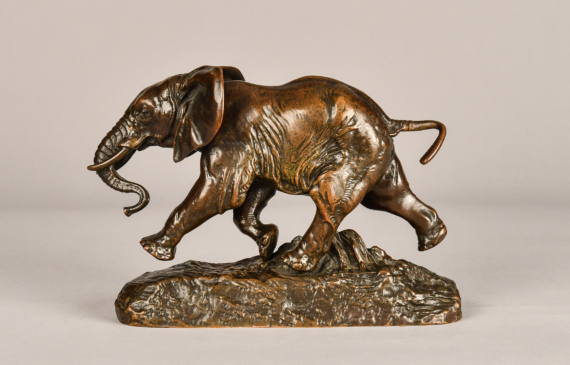
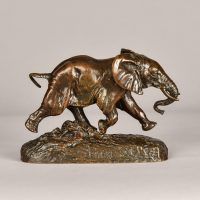
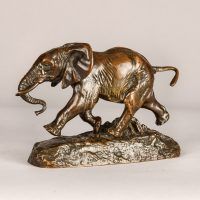
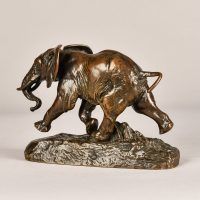
Antoine-Louis Barye (French, 1795-1875)
Éléphant du Sénégal (Senegalese Elephant), 1847
Bronze, brown-red burning copper patina
5 ¼ H. inches
Signed BARYE
Éléphant du Sénégal is the last and most dynamic of Barye’s four elephant studies. Cast in very limited numbers due to Barye’s death in 1875.
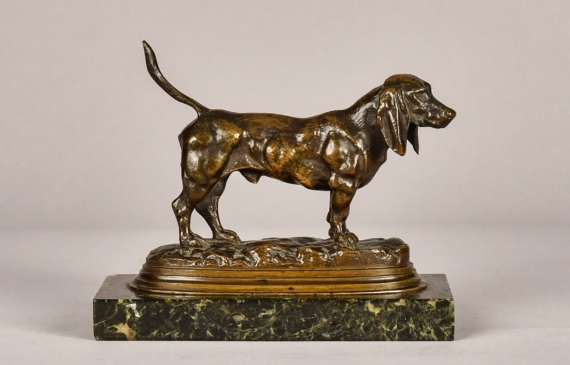
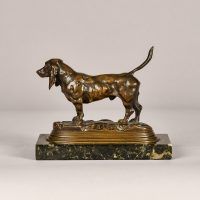
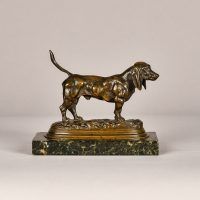
Antoine-Louis Barye (French, 1795-1875)
English Basset
Bronze, 4 ¾ H. x 4 W. x 2 ¾ D. inches
Signed: BARYE
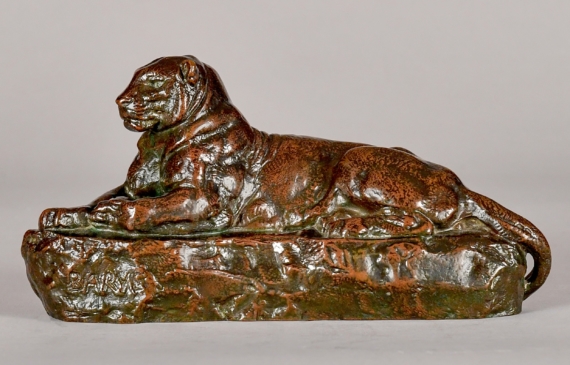
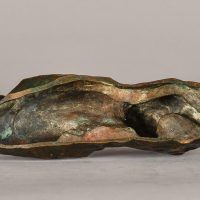
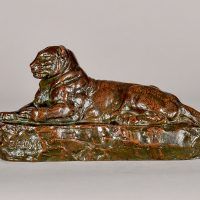

Antoine-Louis Barye (French, 1795-1875)
Panther of India No. 2
Bronze, brown patina
4 H. x 8 W. x 2 ½ D. inches
Signed on base: BARYE
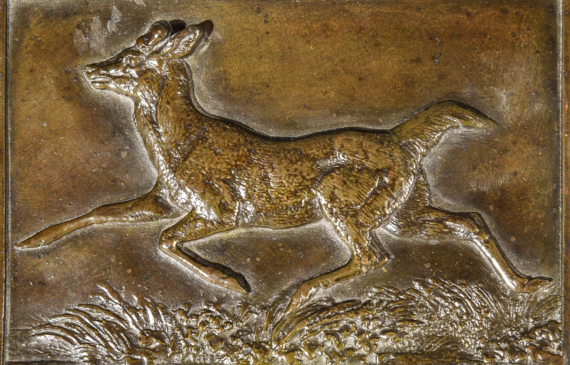
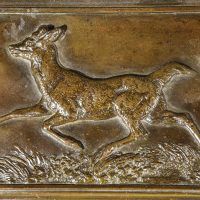
Antoine-Louis Barye (French, 1795-1875)
Virginia Deer, 1831
Bronze bas relief, dark green patina
4 ⅛ H. x 5 ¾ W. inches
Signed lower left: BARYE
Stamped verso: Eck et Durand
Framed
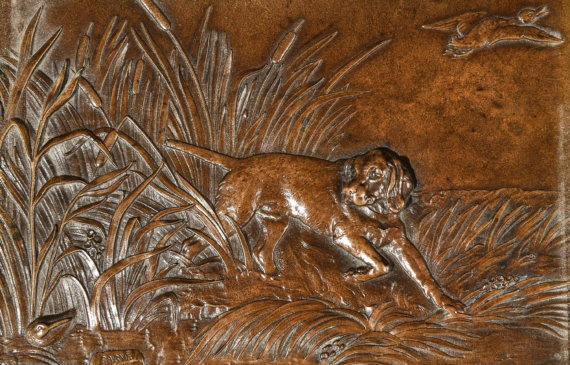
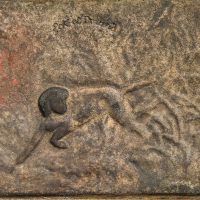
Antoine-Louis Barye (French, 1795-1875)
Pointer and Duck, ca. 1825
Bronze bas relief, brown patina
4 ⅛ H. x 6 ⅛ W. inches
Signed lower left: BARYE
Stamped verso: Eck et Durand
Framed
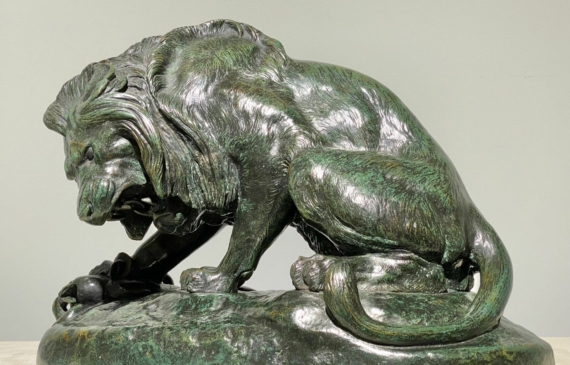
Antoine-Louis Barye (French, 1795-1875)
Lion and Serpent (Lion des Tuileries), 1833
Bronze, dark green and brown patina
11 H. x 15 ¾ W. x 8 ½ D. inches
Signed on base: BARYE
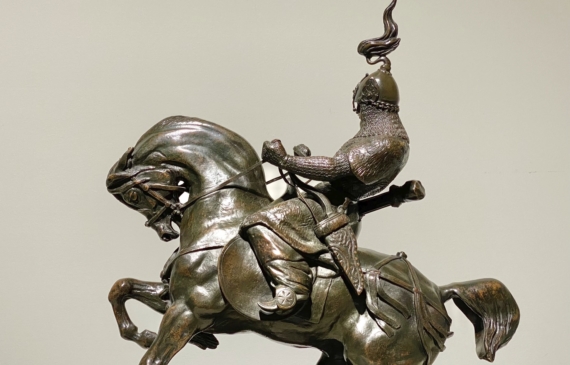
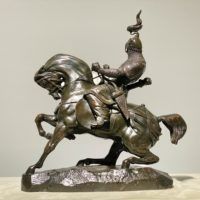
Antoine-Louis Barye (French, 1795-1875)
Tartar Warrior Checking His Horse, 1845
Bronze, dark brown patina
14 ⅞ H. x 14 ¼ W. x 5 ⅜ D. inches
Signed on base: BARYE
Inscribed on base: F. BARBEDIENNE Fondeur
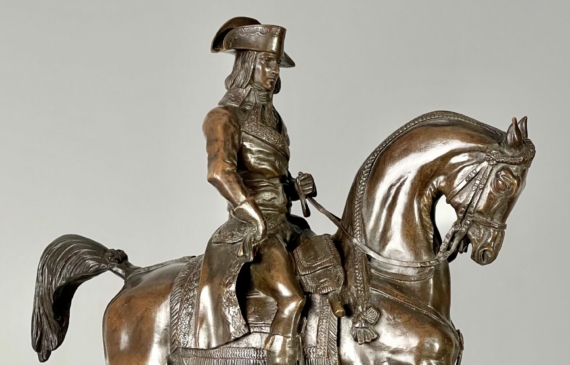
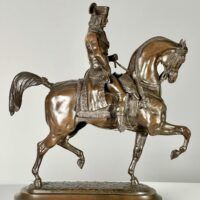
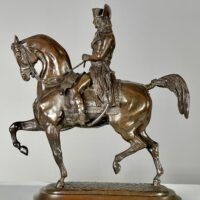
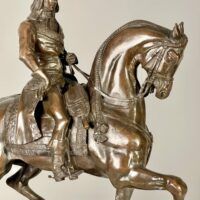
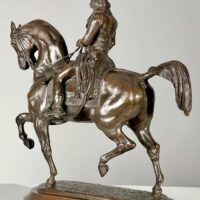
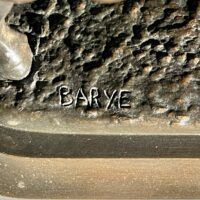
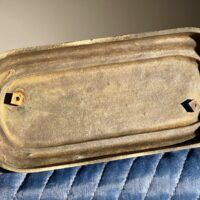
Antoine-Louis Barye (French, 1795-1875)
General Bonaparte, 1845
Bronze, brown patina
13 ¾ H. x 23 W. x 4 ¾ D. inches
Signed on base: BARYE
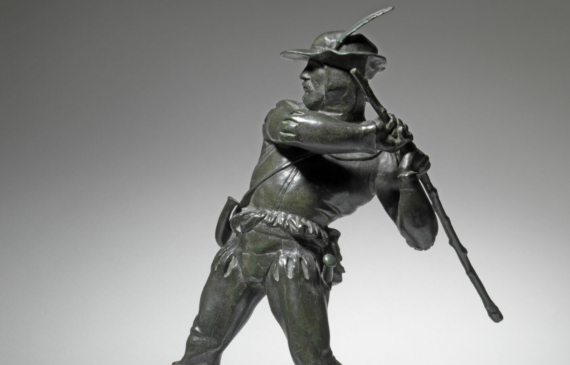
Antoine-Louis Barye (French, 1795-1875)
Medieval Peasant, 1834-38
Bronze, 14 H. x 8 W. inches
Signed on base: BARYE
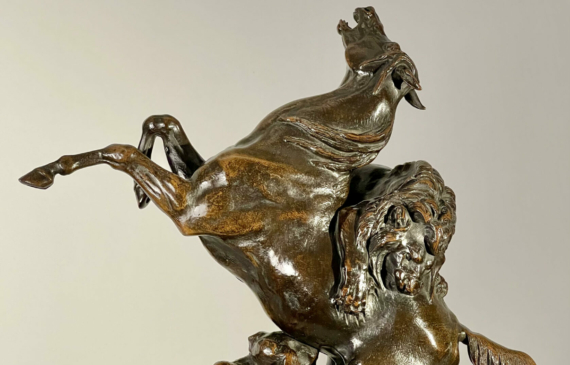
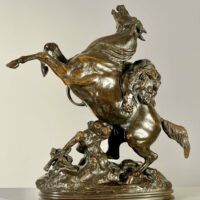
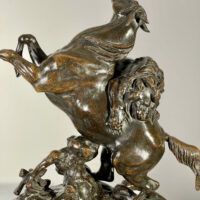
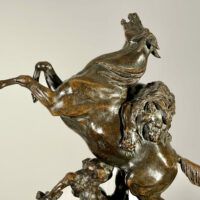
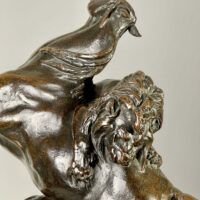
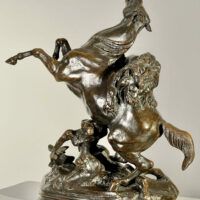
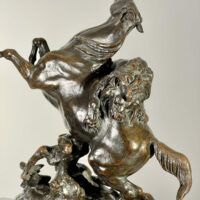
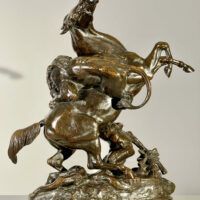
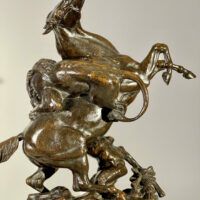
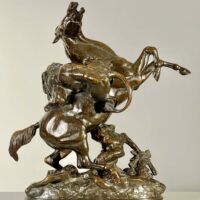
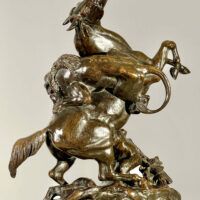
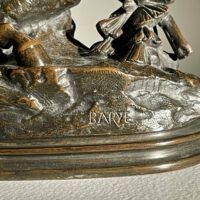
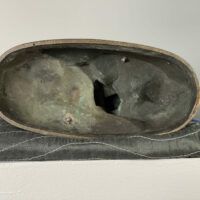
Antoine-Louis Barye (French, 1795-1875)
Horse Surprised by a Lion
(Cheval Surpris par un Lion), 1833
Bronze, dark brown patina
15 ¾ H. x 15 W. x 5 D. inches
Signed on base: BARYE
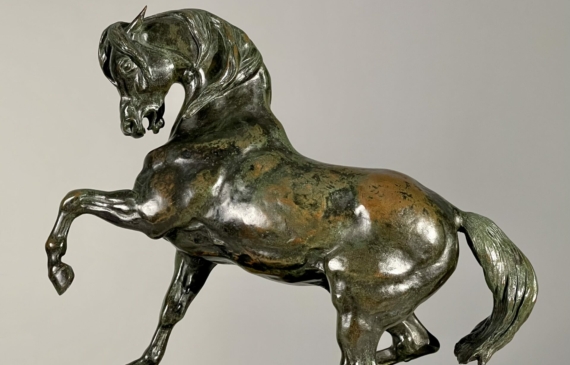
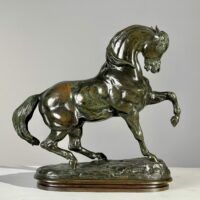
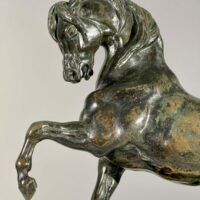
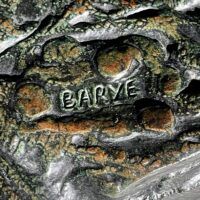
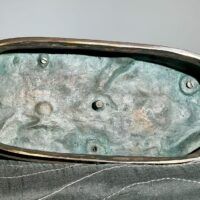
Antoine-Louis Barye (French, 1795-1875)
Turkish Horse, No. 2, Left Leg Raised, 1857
Bronze, dark green and ruddy brown patina on oval base
12 H. x 12 ½ W. x 4 ⅝ D. inches
Signed on base: BARYE
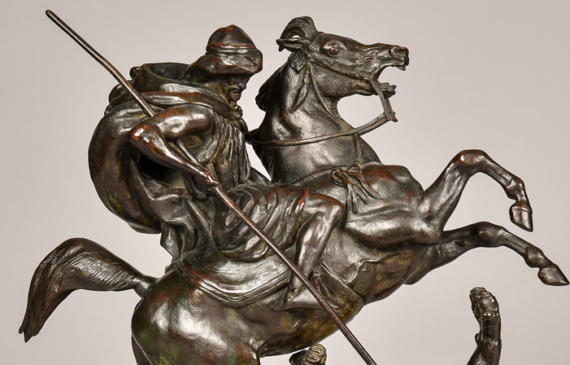
Antoine-Louis Barye (French, 1795-1875)
Arab Horseman Killing a Lion
(Cavalier arabe tuant un lion), 1838
Bronze, dark brown and green patina
15 ¼ H. x 11 ½ W. x 6 ½ D. inches
Signed on base: BARYE
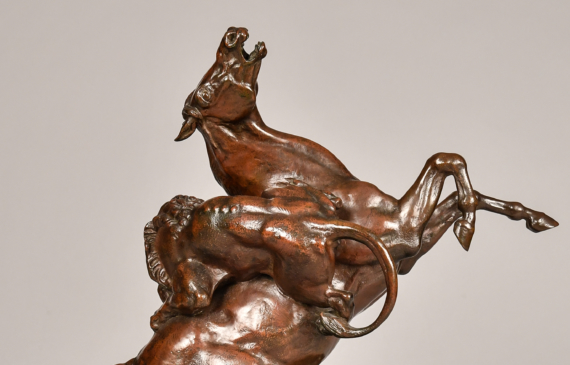
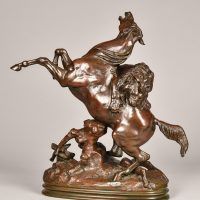
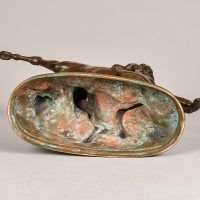
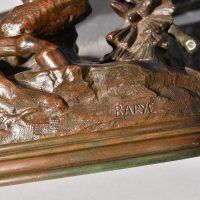
Antoine-Louis Barye (French, 1795-1875)
Horse Surprised by a Lion, circa 1850
Bronze, dark brown patina
15 ¾ H. x 15 W. x 5 ¾ D. inches
Signed on base: BARYE
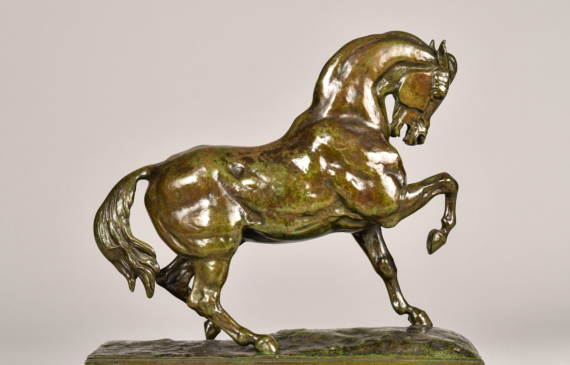
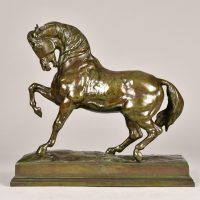
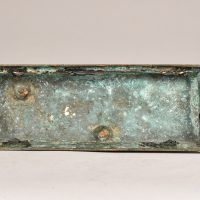
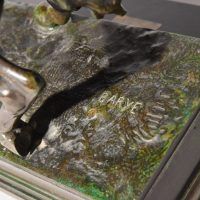
Antoine-Louis Barye (French, 1795-1875)
Turkish Horse, No. 2, circa1844
Bronze, green and brown patina
11 ⅜ H. x 12 ¼ W. x 4 ¾ D. inches
Signed on base: BARYE
Marble base: 5 ¾ H. inches
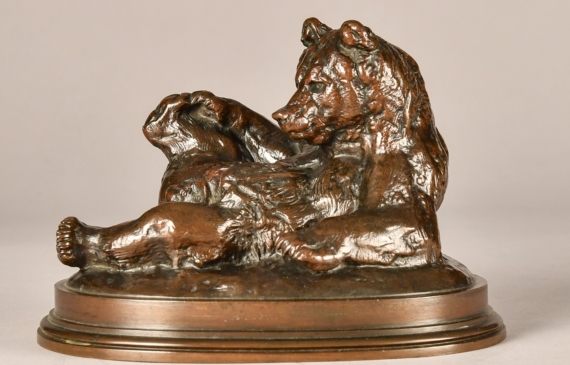
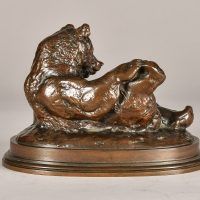
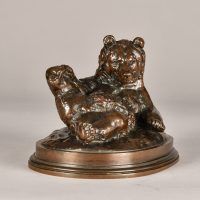
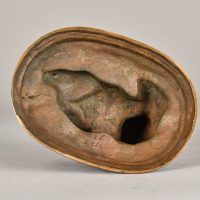
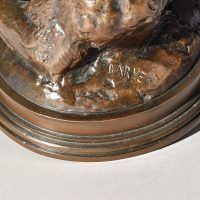
Antoine-Louis Barye (French, 1795-1875)
Seated Bear, 1833
Bronze, brown patina
5 ¾ H. x 8 W. x 5 ⅞ D. inches
Signed on base: BARYE
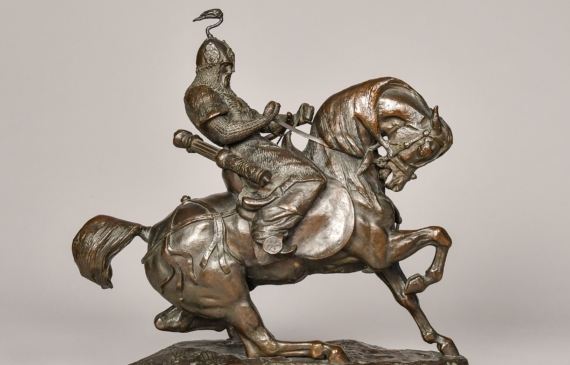
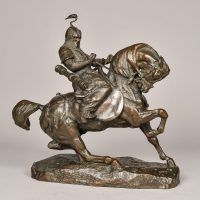
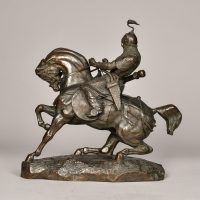
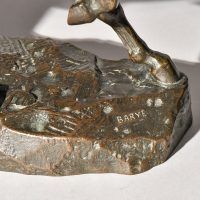
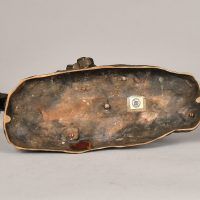
Antoine-Louis Barye (French, 1795-1875)
Tartar Warrior Checking His Horse, 1845
Bronze, dark green-brown patina
14 H. x 14 ¼ W. x 6 ¼ D. inches
Signed on base: BARYE
Wood base: 5 H. inches
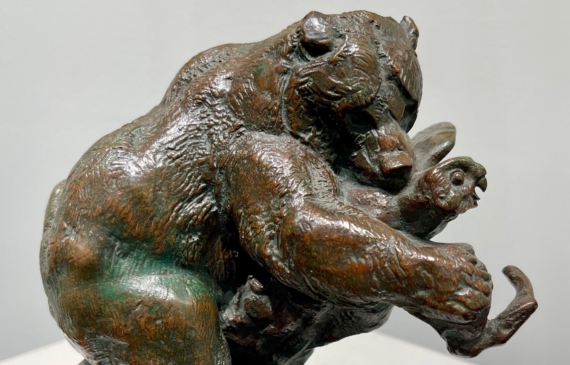
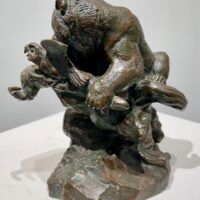
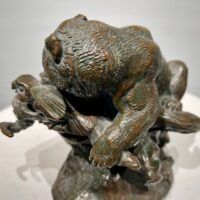
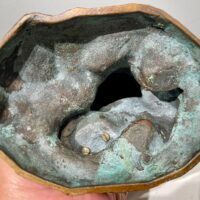
Antoine-Louis Barye (French, 1795–1875)
Bear Devouring an Owl
(Ours monte sur un arbre, mangeant un hibou), 1874
Bronze, green and brown patina
7 ⅝ H. x 7 W. x 4 ⅝ D. inches
Signed on base: BARYE

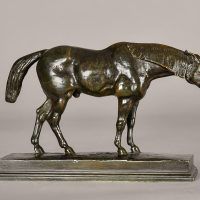
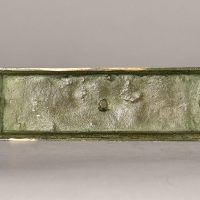
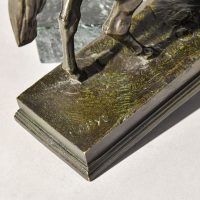
Antoine-Louis Barye (French, 1795-1875)
Half Blood Horse, 1845
Bronze, dark green patina
4 ¾ H. x 7 ½ W. x 2 ¼ D. inches
Signed on base: BARYE

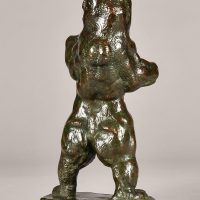
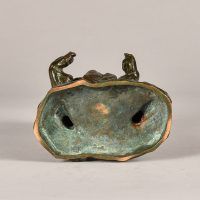
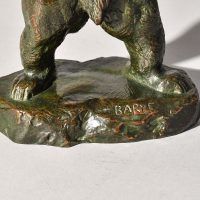
Antoine-Louis Barye (French, 1795-1875)
Standing Bear, 1874
Bronze, brown and green patina
9 ½ H. x 4 ⅞ W. x 4 D. inches
Signed on base: BARYE
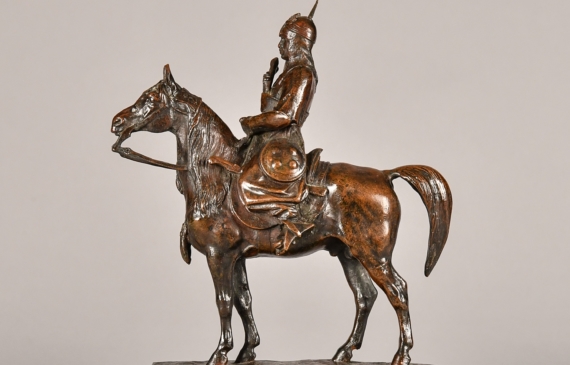
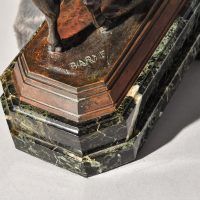
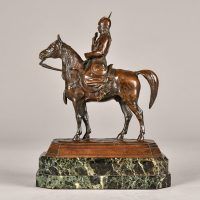
Antoine-Louis Barye (French, 1795-1875)
Caucasian Warrior, 1870
Bronze, dark brown patina
7 ⅞ H. x 6 ¼ W. x 3 D. inches
Signed on base: BARYE
Period marble base
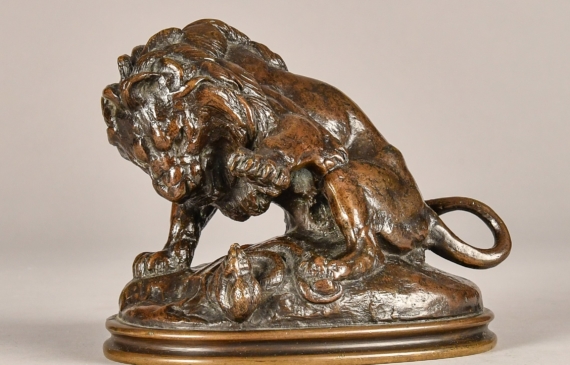
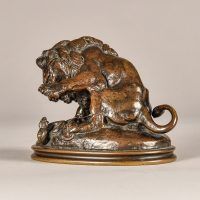
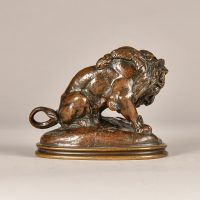
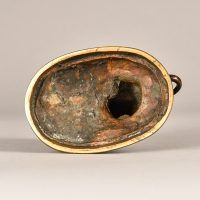
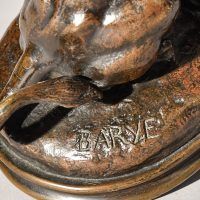
Antoine-Louis Barye (French, 1795-1875)
Lion and Serpent, No. 3, 1833
Bronze, brown patina
5 ¼ H. x 6 ¾ W. x 4 ½ D. inches
Signed on base: BARYE
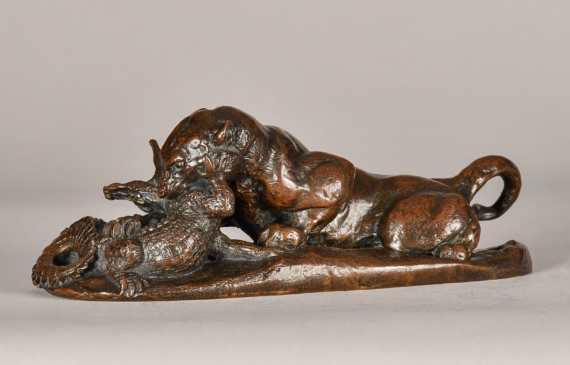
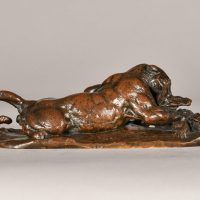
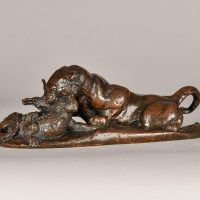
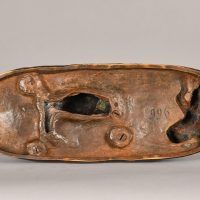
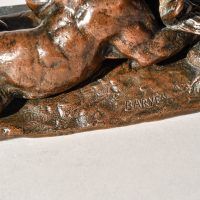
Antoine-Louis Barye (French, 1795-1875)
Jaguar Devouring an Alligator, 1862
Bronze, brown patina
3 ¼ H. x 9 ½ W. x 3 ⅝ D. inches
Signed on base: BARYE
Period wood base
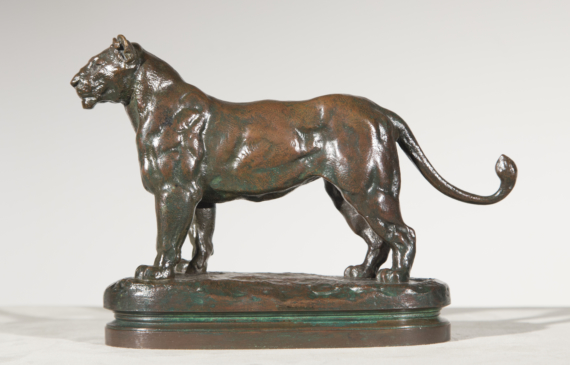
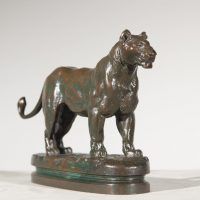
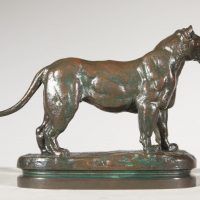
Antoine-Louis Barye (French, 1795-1875)
Lion of Algeria
Bronze with brown and green patina
7 7⁄8 H. X 11 1⁄2 W. X 3 1⁄2 D. inches
Signed on base: Barye
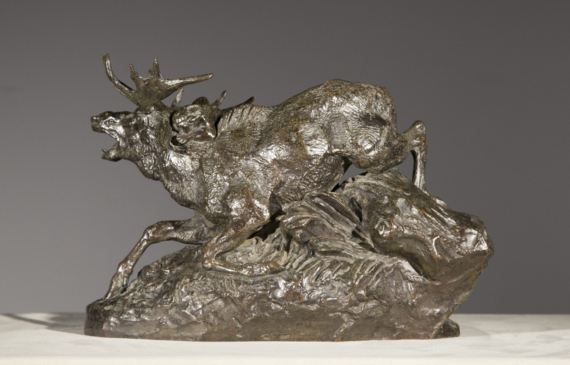
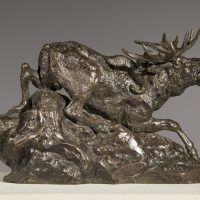
Antoine-Louis Barye (French, 1795-1875)
Elan Surprised by a Lynx
Bronze with dark brown patina
8 7⁄8 H. x 13 W. x 6 1⁄4 D. inches
Signed on base: Barye
Stamped on base: Barye 9.
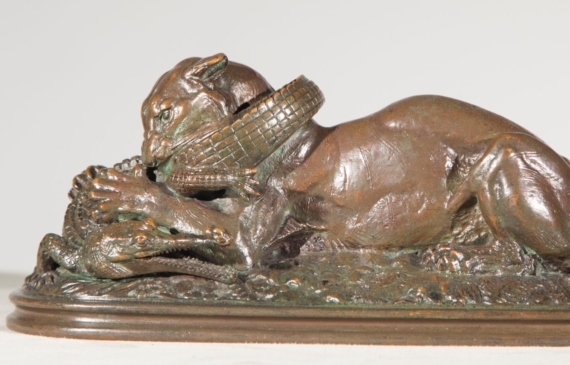
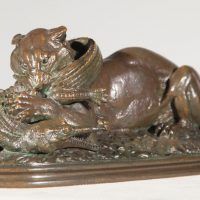
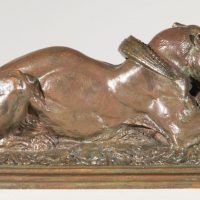
Antoine-Louis Barye (French, 1795-1875)
Tiger Devouring a Gavial
Bronze with dark brown patina
4 3/16 H. x 10 3⁄4 W. x 4 3/16 D. inches
Signed on base: Barye/ 1838
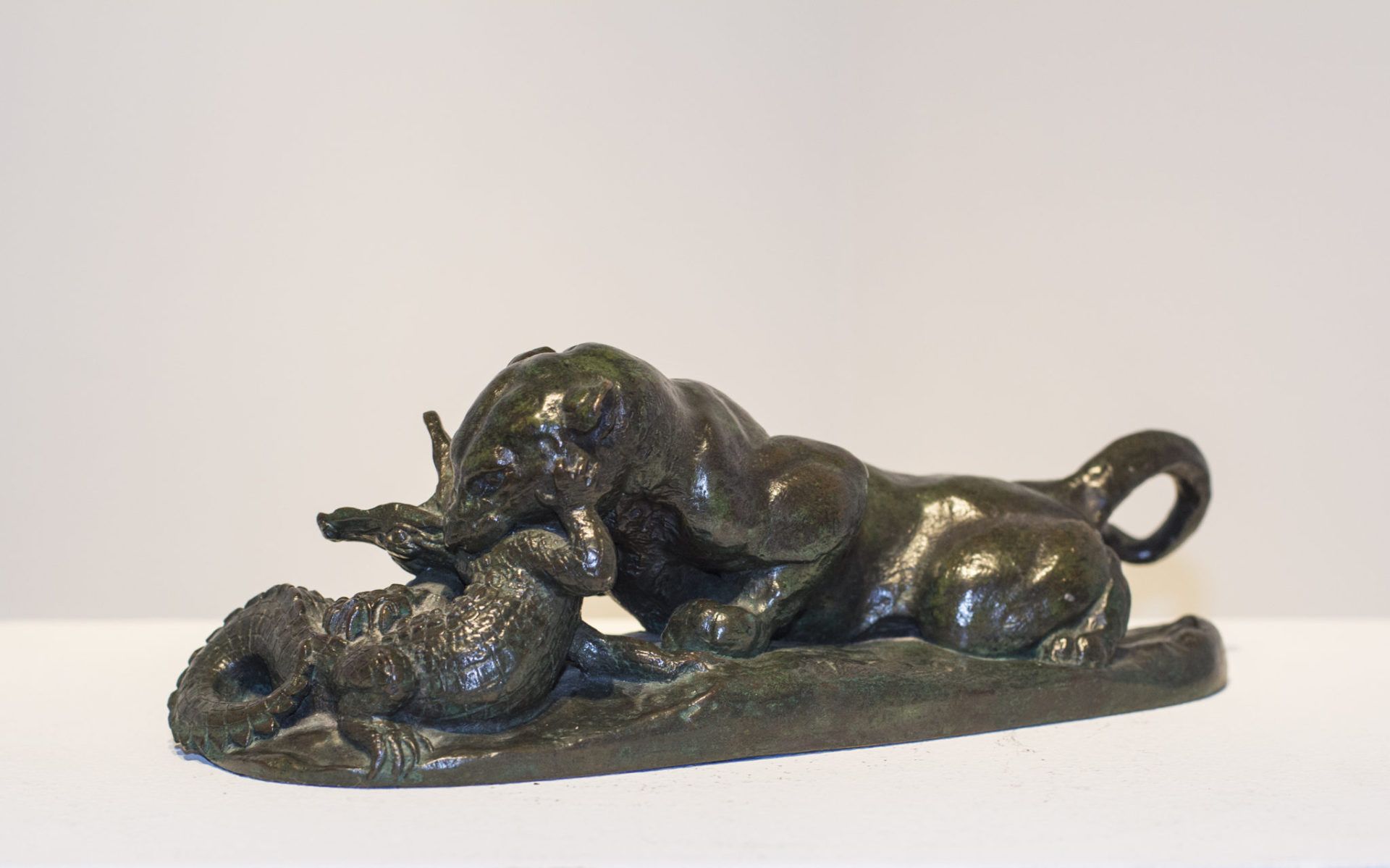
Antoine-Louis Barye (French, 1795-1875)
Jaguar and Crocodile, c. 1862
First edited circa 1862
Bronze, green and brown patina
3 ¼ H. x 9 ½ W. x 3 ½ D. inches
Signed: BARYE (right front top of base)
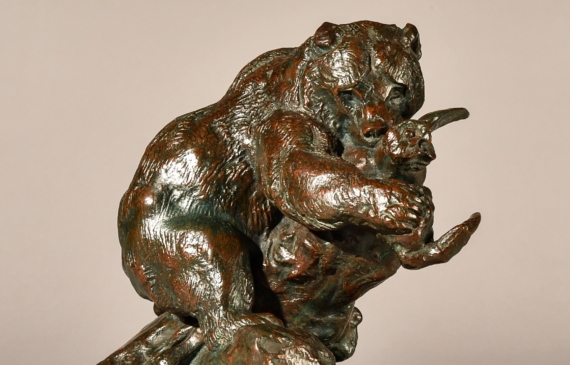
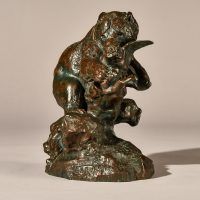
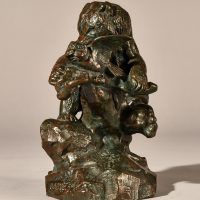
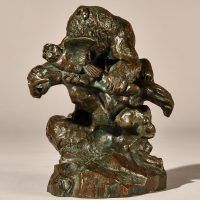
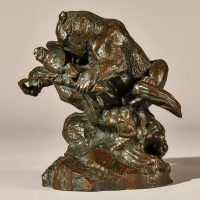
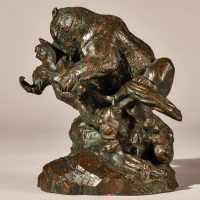
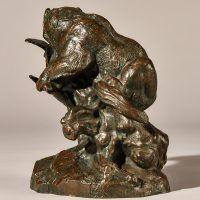
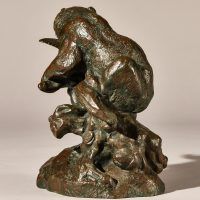
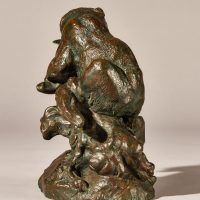
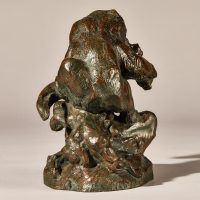
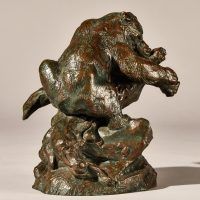
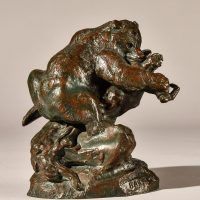
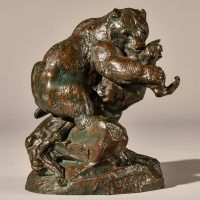
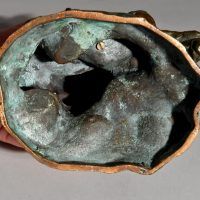
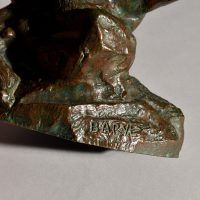
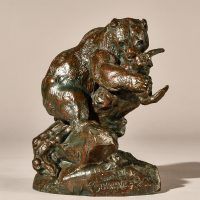
Antoine-Louis Barye (French, 1795-1875)
Bear Climbing a Tree, Devouring an Owl
Bronze, brown patina
7 ⅝ H. x 7 W. x 4 ⅝ D. inches
Signed on base: BARYE
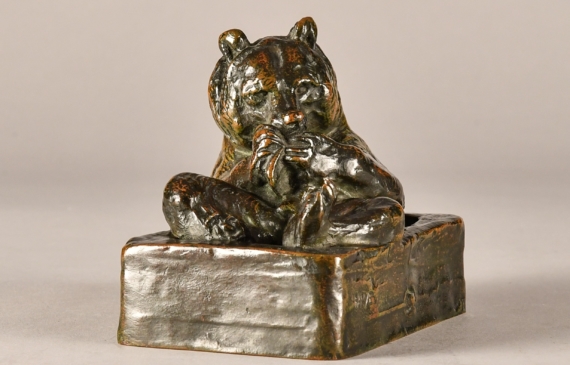
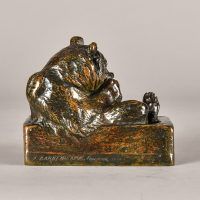
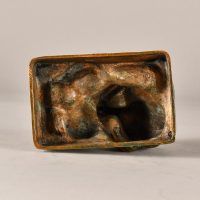
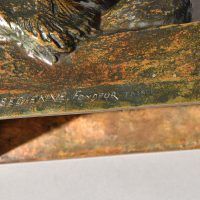
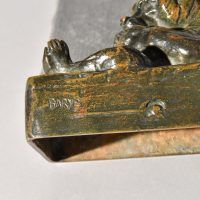
Antoine-Louis Barye (French, 1795-1875)
Bear In His Trough, 1832
Bronze, dark brown patina
4 ½ H. x 5 ¼ W. x 3 ¾ D. inches
Signed on base: BARYE
Inscribed: F. BARBEDIENNE. Fondeur FRANCE
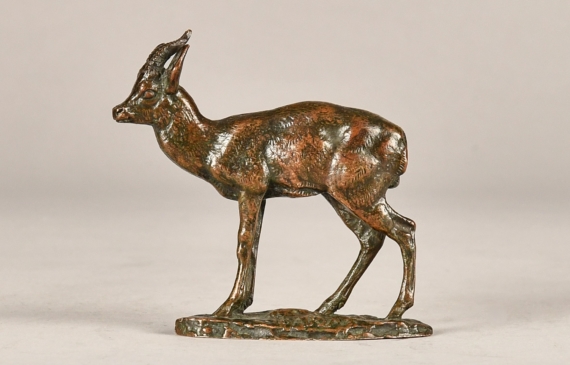
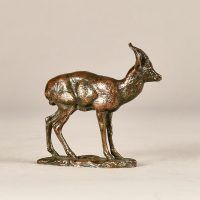
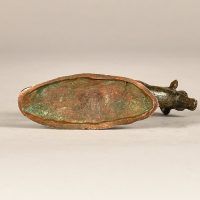
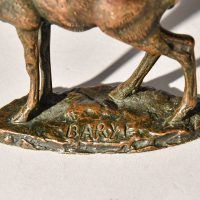
Antoine-Louis Barye (French, 1795-1875)
Kevel, 1857
Bronze, brown patina
3 ¾ H. x 4 W. x 1 ¼ D. inches
Signed on base: BARYE
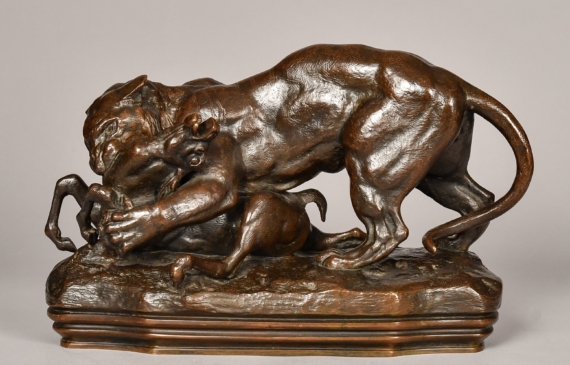
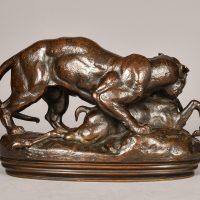
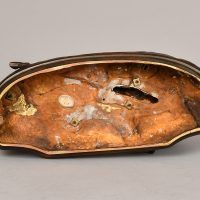
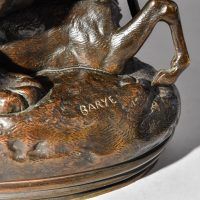
Antoine-Louis Barye (French, 1795-1875)
Tiger Surprising an Antelope, 1857
Bronze, brown patina
10 ¼ H. x 14 ⅜ W. x 7 D. inches
Signed on base: BARYE
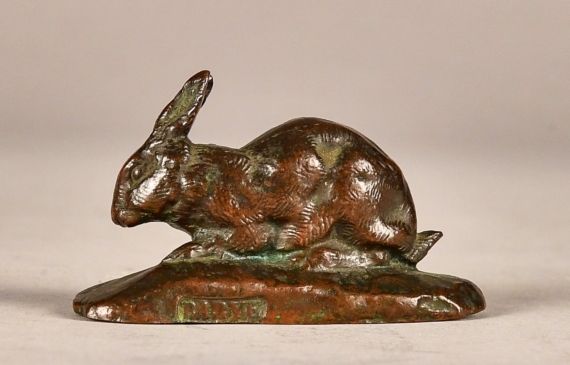
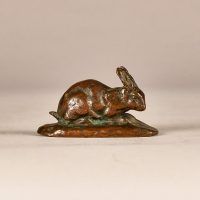
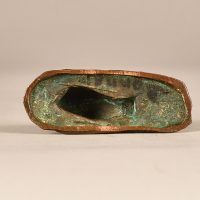
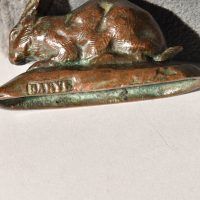
Antoine-Louis Barye (French, 1795-1875)
Rabbit with Ears Up, 1865
Bronze, brown patina
1 ¾ H. x 3 W. x 1 ⅛ D. inches
Signed on base: BARYE
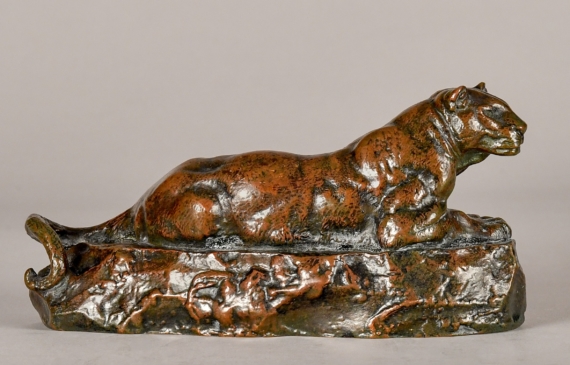
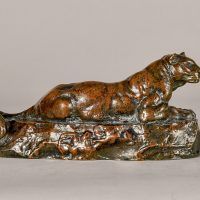
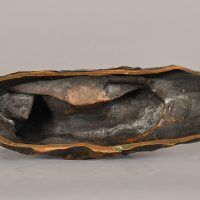
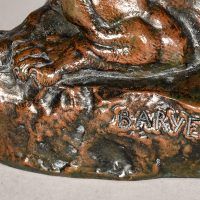
Antoine-Louis Barye (French, 1795-1875)
Panthere of Tunis, 1860
Bronze, brown patina
3 ¾ H. x 7 ¾ W. x 2 ¾ D. inches
Signed on base: BARYE
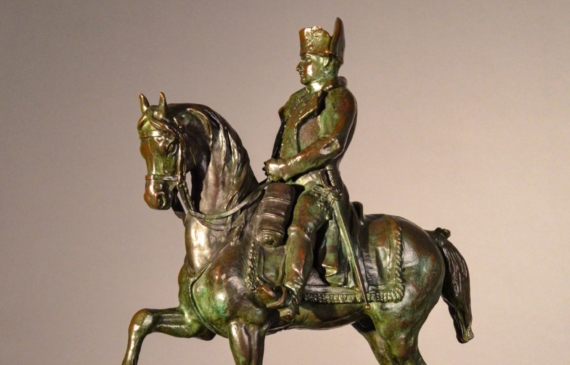
Antoine-Louis Barye (French, 1795-1875)
Napoleon I, model, 1862
Bronze, dark brown and green patina
17 ⅞ H. x 13 ⅝ W. x 5 ½ D. inches
Overall height with marble base: 22 ⅞ H. inches
Stamped front quarter base: BARYE
Signed rear quarter base: BARYE
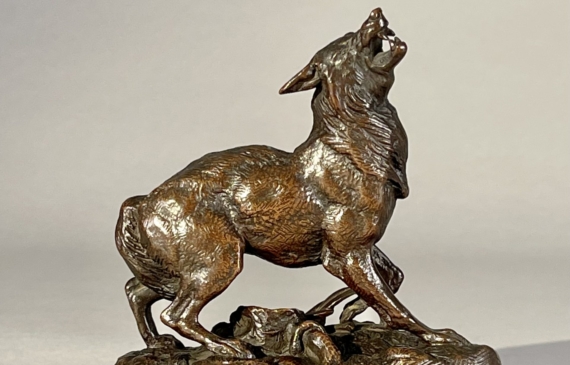
Antoine-Louis Barye (French, 1795-1875)
Wolf Caught in a Trap, 1870
Bronze, dark brown patina
4 ½ H. x 5 W. x 2 D. inches
Signed on base: BARYE
Mounted to period marble base
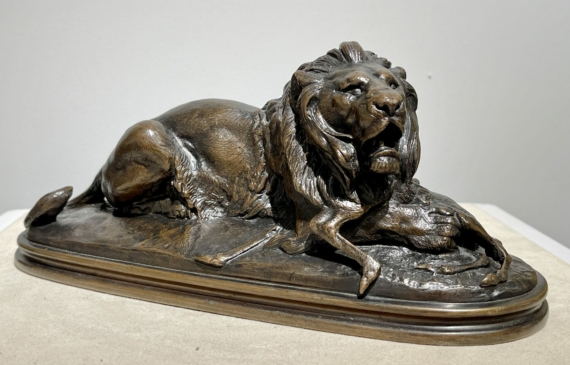
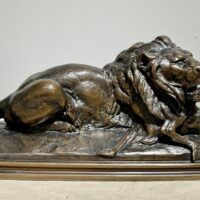
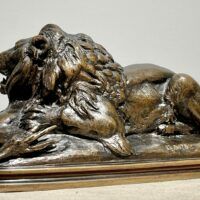
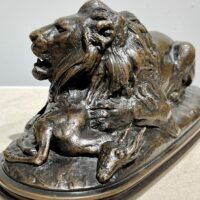
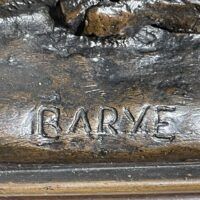
Antoine-Louis Barye (French, 1795-1875)
Lion Holding a Bushbuck, cast 1833
Bronze, 4 ⅜ H. x 10 ⅞ W. x 4 ¼ D. inches
Signed: BARYE
Provenance:
Private collection, Chicago (c. 1960)
By descent
Antoine-Louis Barye (French, 1795-1875)
Antoine-Louis Barye is considered the father of the French animalier school that became popular in the middle of the nineteenth century. The animalier movement was notable for its realistic and naturalistic portrayal of animals. Barye addressed themes such as wild animals in dramatic action pitted against each other in the struggle for survival. He was also instrumental in foundry practices, and placed a great deal of energy and passion into the fabrication of his bronzes. Barye was extremely influential to generations of European and American sculptors. He received many commissions, and executed public works and monuments around France. Until the 1990s, he was believed to have been born in 1796 rather than 1795, a correction discovered with scholar Martin Sonnabend’s reinterpretation of the Revolutionary Calendar. Barye’s works are represented in the great museums throughout the world, with large collections in American institutions such as the Metropolitan Museum of Art, N.Y.; the Brooklyn Museum; the Walters Art Museum, Baltimore; the Baltimore Museum of Art; and the Corcoran Gallery of Art, Washington D.C.